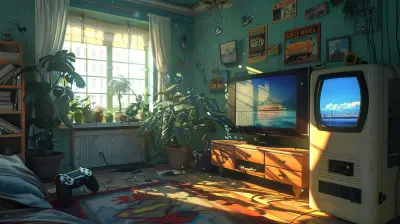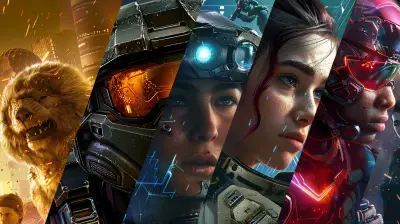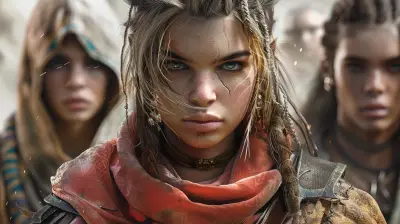Living Ecosystems: How Games Simulate Wildlife and Nature
18 April 2025
Have you ever found yourself immersed in a virtual world so vivid that you could almost feel the grass moving beneath your feet and hear birds chirping in the distance? That’s the magic of modern games! Video games have come a long way from pixelated environments and blocky trees. Today, many games don’t just plop you into a synthetic world; they breathe life into it, crafting living ecosystems that feel vibrant, dynamic, and oddly real. But how do developers pull this off? How do they simulate wildlife and natural environments so convincingly? Let’s dive headfirst into this fascinating blend of art, technology, and biology.
The Evolution of Nature in Games
Back in the day, “nature” in games was little more than static backdrops. Think of those old-school platformers where mountains and trees were merely decorative—we appreciated them, but they didn’t interact with us. Fast forward to now, and we’ve got dynamic weather systems, flourishing wildlife, and ecosystems that respond to your every move. The evolution is nothing short of mind-blowing.Take The Legend of Zelda: Breath of the Wild, for example. This game didn’t just feature lush environments—it made them feel alive. Animals roam freely, weather patterns shift realistically, and the environment responds to the player's actions, creating a world that feels less like a game and more like a living organism.
But this isn’t just about aesthetics. Developers are striving to simulate ecosystems that mimic real-world biology. Why? Because a lively, interconnected world isn't just more immersive; it’s downright captivating.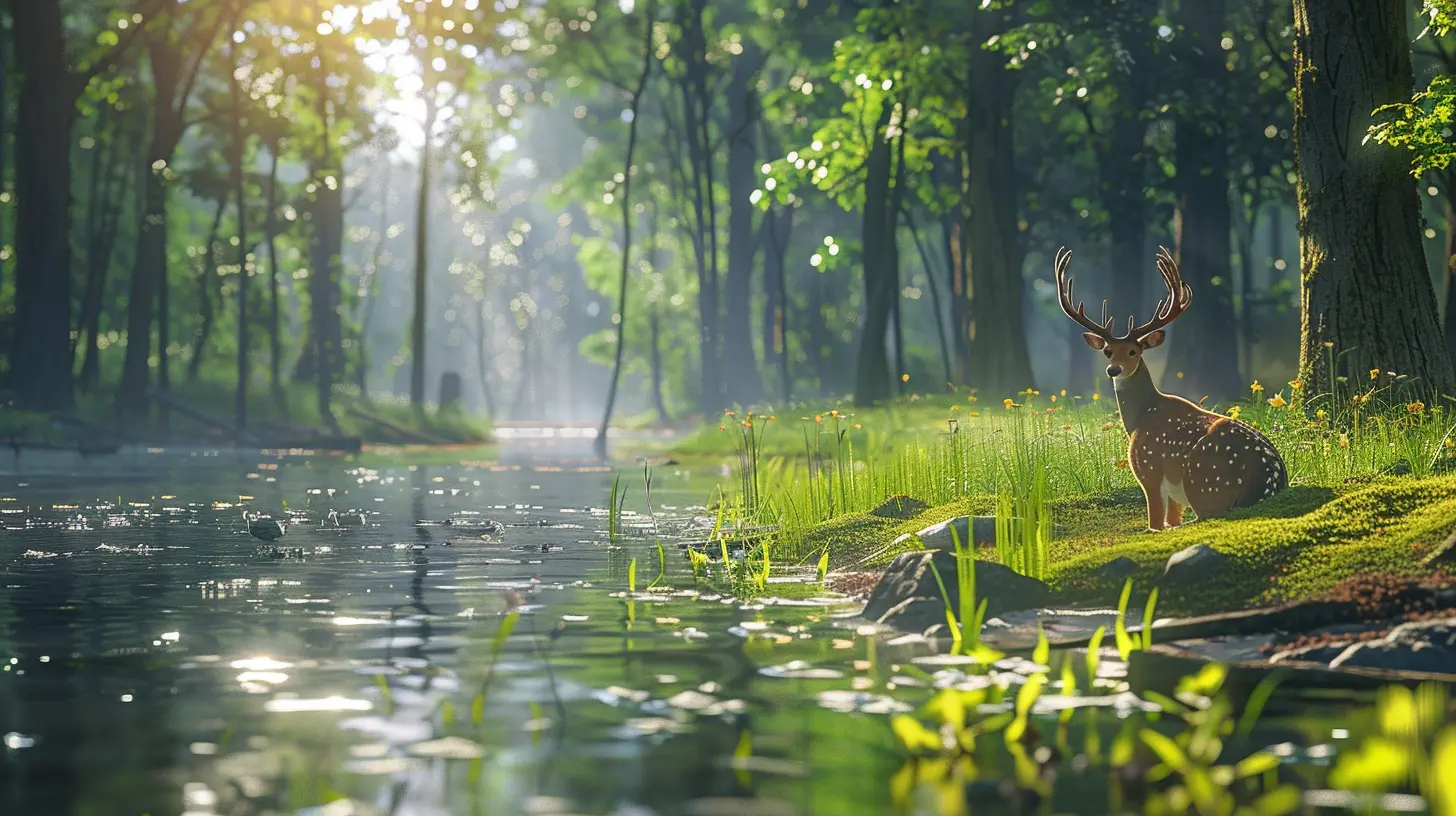
Why Simulate Wildlife and Nature?
Think about it—why go through the trouble of simulating an entire ecosystem when players are here for the adventure? Well, here’s the thing: it’s all about immersion. A living world makes games more engaging, and let’s be honest, who doesn’t love watching a deer sprint across a sunlit meadow or waiting patiently as a fish bites in a serene pond?Simulating wildlife also adds unexpected layers of depth. Imagine hunting for food in a survival game, only to realize that overhunting in one area disrupts the local ecosystem. Suddenly, your actions have weight. That’s exactly the kind of emotional resonance developers aim for.
Games like Red Dead Redemption 2 showcase this perfectly. There’s an entire ecosystem at play—predators hunt prey, fish populate rivers, and birds migrate across the sky. These elements make the world feel authentic, like it’s continuing to operate even when you aren’t looking. That’s not “just a game”; it’s a living, breathing universe.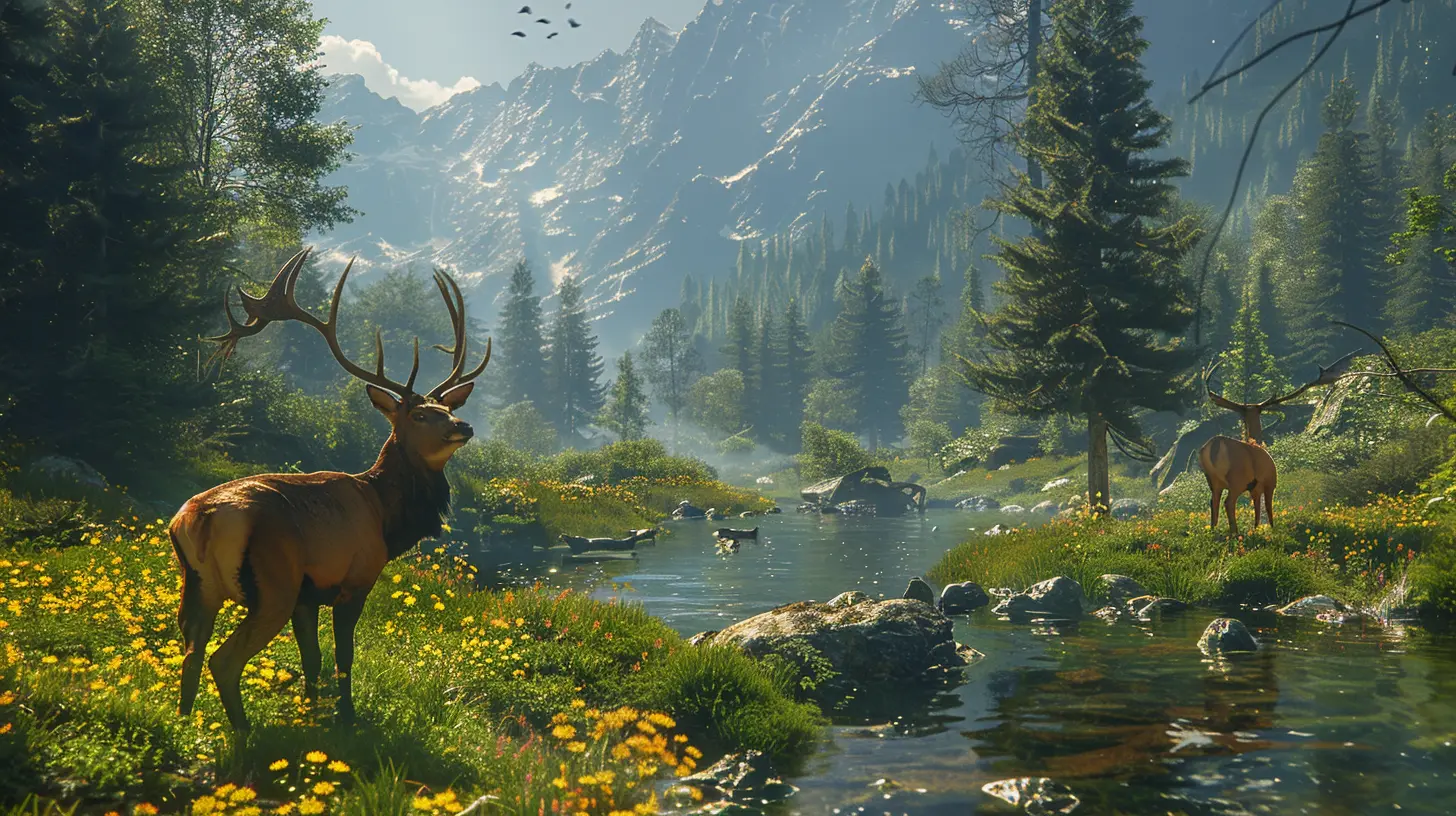
The Science Behind Gaming Ecosystems
Okay, now let’s get a little nerdy. How do developers simulate wildlife and ecosystems? Spoiler alert: it involves a mix of computer science, biology, and a dash of wizardry.1. AI-Driven Wildlife
Animals in games aren’t just aimlessly wandering blobs—they’re powered by artificial intelligence (AI). Developers use intricate algorithms to simulate animal behavior. For example, in Far Cry, predators like wolves hunt in packs, while prey animals will flee or hide when danger is near. This isn’t random—it’s carefully coded to mirror natural instincts.AI doesn’t stop at animals, either. In ecosystems, everything is interconnected. Predators need prey, prey needs plants, and plants need soil. Games like Eco mimic these delicate balances. If you overhunt or destroy too much of the environment, the ecosystem collapses. It’s like a digital version of “The Lion King’s” circle of life, but with more math.
2. Procedural Generation
Some games go a different route by using procedural generation to create dynamic environments. Think of it like having a world-building machine that spits out unique environments every time you play. This method ensures that no two players experience the same game. For example, Minecraft generates an endless, unique world with caves, rivers, and biomes. Though simple compared to real-life ecosystems, it lays the groundwork for unpredictability—an essential element of nature.3. Dynamic Weather and Seasons
Okay, this part is seriously cool. Have you ever noticed how rain can make a forest feel more alive? Or how winter in a game changes everything, from the way animals behave to how plants grow? Developers use dynamic weather and seasonal cycles to make worlds feel alive. In Horizon Zero Dawn, for instance, weather impacts visibility and player strategies, while wildlife behavior changes with the time of day. It’s these little details that trick our brain into believing we’re part of a real, living ecosystem.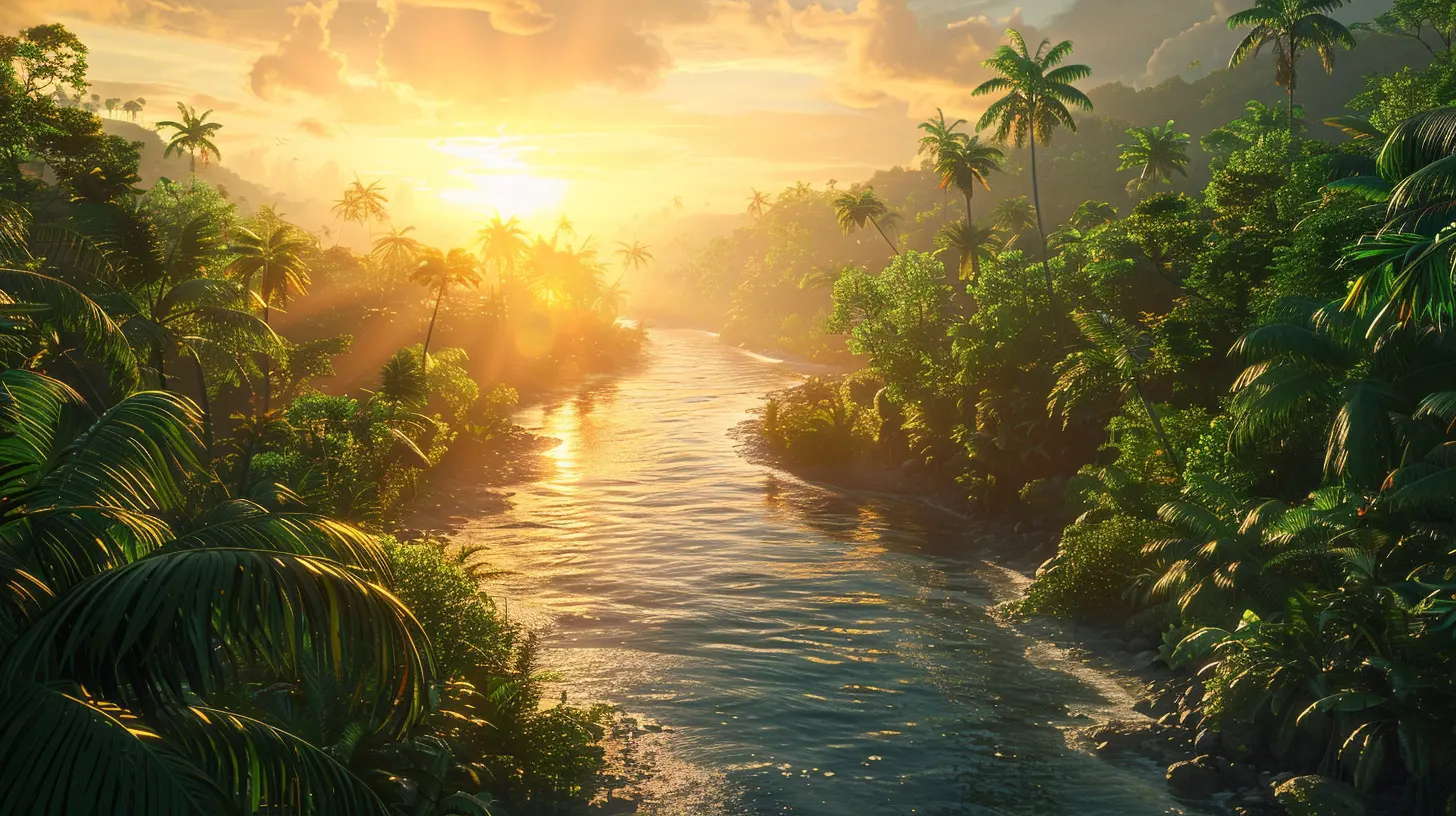
Games That Nailed Living Ecosystems
You didn’t think I’d make you read all about this without naming some standout games, did you? Here are a few titles that knocked it out of the park when it comes to simulating wildlife and nature:1. The Witcher 3: Wild Hunt
From the bustling markets of Novigrad to the dense forests where wolves and deer roam, The Witcher 3 creates a world teeming with life. The ecosystem isn’t just for show; monsters lurk in the shadows, and natural cycles like weather and time add layers of realism.2. Subnautica
This underwater survival game is a prime example of ecosystems done right. The world of Subnautica is rich with alien wildlife that behaves in natural ways. Fish school together, predators stalk their prey, and the underwater plants sway with the current. It’s eerily beautiful and almost meditative.3. Red Dead Redemption 2
I know I’ve already mentioned this one, but come on—it’s a masterpiece. Its world is built on a delicate food chain where bears, wolves, and deer interact realistically. The attention to detail is staggering, from vultures circling over fallen prey to fish leaping from streams. Even NPCs (non-playable characters) live in harmony with the world, fishing, hunting, and surviving alongside the wildlife.Challenges in Simulating Nature
Of course, simulating ecosystems isn’t all sunshine and rainbows. Creating a believable, living world is hard. One of the biggest challenges is balancing realism with gameplay. Let’s be real—no one wants to wait an hour for a predator to carefully stalk its prey like it would in nature. Developers have to find a sweet spot between reality and fun.Then there’s the performance issue. Simulating ecosystems requires a lot of computing power. Games need to run on various platforms, so developers often have to make compromises. For instance, you might notice fewer animals or simplified behaviors on older consoles.
Why This Matters Beyond Gaming
Believe it or not, simulating ecosystems in games isn’t just about entertainment—it could have real-world implications. Scientists and biologists are starting to use simulations like these to study ecosystems and climate change. Programs like Ecotopia use machine learning algorithms to predict how real-world ecosystems might respond to various threats. Who knew your favorite hobby could contribute to environmental science?What’s Next for Living Ecosystems?
So, what does the future hold? Well, as technology advances, so will our ability to create even more realistic ecosystems. Imagine games where animals learn and adapt over time, where storms form organically based on heat and atmospheric pressure, and where entire food chains thrive (or collapse) depending on your choices.Virtual reality (VR) is another exciting frontier. Imagine stepping into a rainforest where you can feel the humidity and hear the rustling leaves as a monkey swings above you. Games could inch closer and closer to becoming indistinguishable from real-life ecosystems.
Final Thoughts
At the end of the day, living ecosystems in games aren’t just about pretty visuals—they’re about crafting worlds that feel alive and make us care. Whether you’re marveling at a whale breaching in Subnautica or chasing deer through the fields of Breath of the Wild, these moments are what make games unforgettable. They allow us to see the beauty, chaos, and fragility of nature—all from the comfort of our couch. And who knows? Maybe they’ll inspire us to take better care of the real ecosystems around us.all images in this post were generated using AI tools
Category:
Realism In GamesAuthor:

Lana Johnson
Discussion
rate this article
4 comments
Sylvan McAnally
Exploring how games authentically represent ecosystems reveals their potential to educate players about wildlife conservation and the intricate balance of nature.
April 27, 2025 at 4:33 AM

Lana Johnson
Thank you for your insightful comment! Indeed, games can serve as powerful tools for education, fostering a deeper understanding of ecology and the importance of conservation.
Miles McNeely
Who knew pixelated critters could teach us so much? If only my houseplants responded to video game logic! Here’s hoping for the day my succulents level up and start flourishing like the wildlife in my favorite games!
April 25, 2025 at 4:57 PM

Lana Johnson
It's fascinating how games can inspire our understanding of ecosystems! If only our plants had that same motivation to flourish! 🌱🎮
Derek Butler
Exploring living ecosystems in games not only enhances our gaming experience but also deepens our connection to nature. Let's celebrate these virtual worlds that inspire appreciation for wildlife and the beauty of our planet!
April 20, 2025 at 4:30 AM

Lana Johnson
Absolutely! Games that simulate living ecosystems not only enrich gameplay but also foster a greater appreciation for our environment. It's wonderful to see how virtual worlds can inspire real-world connections to nature!
Charlotte Palmer
Nature's wonders, gaming's heartbeat!
April 18, 2025 at 3:54 PM

Lana Johnson
Thank you! It’s fascinating how games can bring the beauty of nature to life while immersing players in its complexities.

